|
For any balanced budget, what comes in must equal what goes out. In the case of planets orbiting
the Sun, this means that the absorbed fraction of the incoming solar radiation must equal the outgoing emitted radiation. Otherwise,
the planet will either get hotter or cooler. Balancing the global energy budget is a fundamental
aspect of the climate system.
Consider a beam of sunlight hitting the Earth at the equator as shown
in Figure 1. The beam is approximately
at right angles to the Earth's surface, so the amount of Earth it is spread
over (area a), is the same as the width of the beam.
Closer to the poles, a beam of the same width covers a much bigger amount
of the Earth (area b), because it arrives at a different
angle to the Earth's surface. This means that the surface of the Earth
receives more energy in the tropics per unit area than it does at the
poles. In a similar way, at midday, when the sun is highest in the sky,
a sunbeam of a certain width illuminates an area smaller than the same
sunbeam would illuminate at dawn or dusk, when the sun is lower in the
sky. The sun therefore feels hottest at midday.
 Figure 1. Solar radiation arrives at a different angle to the Earth's surface
at the poles than at the equator. In consequence, the area that the beam covers is smallest at
the equator and gets larger towards the poles (area b is bigger than area a), so the Earth
receives more heat per unit area at the equator than it does at the poles.
Figure 1. Solar radiation arrives at a different angle to the Earth's surface
at the poles than at the equator. In consequence, the area that the beam covers is smallest at
the equator and gets larger towards the poles (area b is bigger than area a), so the Earth
receives more heat per unit area at the equator than it does at the poles.
Some of the incoming solar radiation (which is mainly ultraviolet, visible
light and short wavelength infrared) is reflected or scattered directly
back into space by the atmosphere and some is absorbed by the Earth and the atmosphere (see yellow arrows in
Figure 2). Once the radiation is
absorbed, the Earth's surface (and atmosphere) re-emits this energy at a longer wavelength
in the form of thermal (or infra-red) radiation.
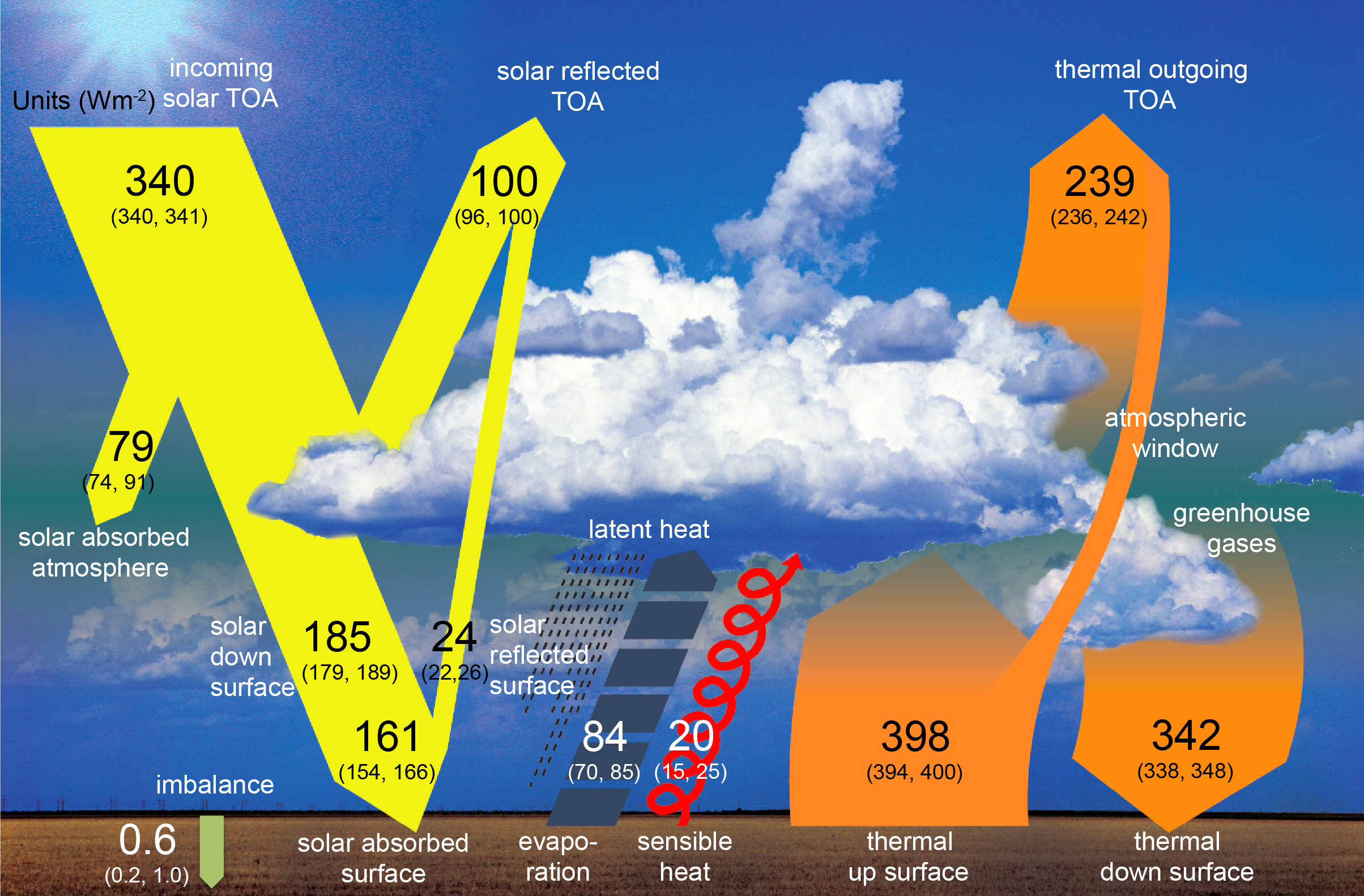
Figure 2. The Earth's global annual radiation budget.
The numbers are all in W/m2 (Watts per square metre), a measure
of energy flux. Of the incoming radiation, 47% (161 divided by 340) is absorbed
by the Earth's surface. That heat is returned to the atmosphere in a variety
of forms (evaporation processes and thermal radiation, for example). Most
of this upward flow of heat is absorbed by the atmosphere, which then
re-emits it as thermal infra-red (longwave) radiation both up and down. Some is lost to space, and some stays in
the Earth's climate system. The efficiency at which Earth can cool to space through thermal infra-red
(long wavelength) radiation is determined by the Greenhouse Effect. The
imbalance between absorbed sunlight and outgoing thermal radiation determines whether the planet heats up of cools
down. The latest observations indicate an accumulation of heat by the Earth (primarily within the oceans) of 0.6 Wm-2.
This may appear small but is currently what is driving global climate change.
[Figure from IPCC 2013].
Figure 3 shows how the distribution
of incoming solar ( shortwave) and outgoing (longwave) terrestrial radiation
varies with latitude (a measure of distance from the equator). The tropics are net
absorbers of energy as the amount of absorbed solar energy is greater
than the amount of outgoing longwave radiation. Conversely, the poles
are constantly losing heat. This should mean that the tropics are constantly heating
up and the poles cooling down, but they're not. The Earth must therefore
continuously pump heat from the tropics to the poles: it is a heat engine.
The circulation of the Earth's atmosphere
and oceans is the dominant pumping mechanism. They carry approximately equal amounts of
energy from the equator to the poles.
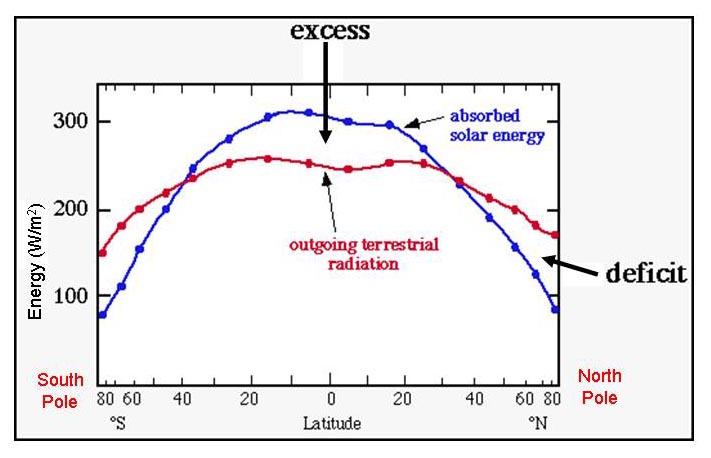
Figure 3. Shortwave radiation (from the Sun) and
longwave radiation (heat emitted by the Earth and its atmosphere) vary with latitude. The
difference between the two shows that the Earth is a net absorber of energy
(i.e. absorbed energy > outgoing energy) in the tropics, and
a net emitter (outgoing energy > absorbed energy) in the polar
regions. This is a plot of zonal mean radiation; that
is, it shows how the radiation varies with latitude but not longitude.
If you imagine a circle around the globe at each latitude, the radiation
has been averaged around the circle, because in this case the variation
with longitude is less interesting than the variation with latitude.
Global Atmospheric Circulation
The circulation of the atmosphere is responsible for about 50% of
the transport of energy from the tropics to the poles. The basic mechanism
is very simple: hot air rises in the tropics (convection), reducing
the pressure at the surface and increasing it higher up. This forces the
air to spread away polewards at high levels, and to be drawn in at low
levels. As the warm, polewards moving air comes into regions with less
incoming solar radiation, it cools and sinks, thus completing the circulation.
If the Earth were not rotating, we would see this very simple pattern: hot air would rise in the
tropics, move away from the equator, gradually cool, sink at high latitudes near the poles,
and finally re-circulate near the surface towards the equator (see Figure 4).
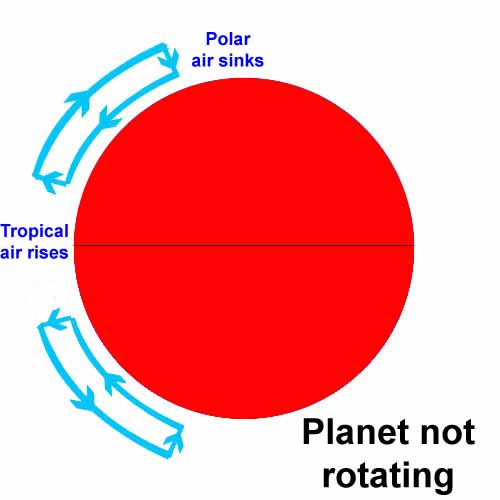
Figure 4. If the Earth were not rotating tropical air would rise, travel
towards the pole, cool and sink before returning to the equator. The dominant flow at all heights
would be along lines of longitude.
However, the Earth's rotation and the distribution of mountains and oceans complicates matters and the atmospheric circulation is closer to that depicted in Figure 5.
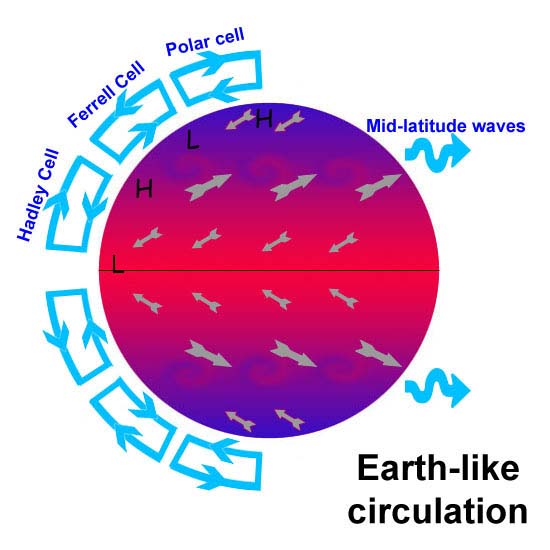
Figure 5. Idealisation version of the Earth's atmospheric
circulation. Air is heated and rises in the tropics, drifting north before
sinking around 30o North and South in the Hadley Cell circulation.
At the surface, air flow is easterly and is known as the trade winds.
In the mid-latitudes (about 30oN-60oN) the circulation is dominated by
large-scale wave activity and extra-tropical storms (the reason European
weather is so unsettled!), which manifests itself as the Ferrell Cell.
At high latitudes the simple, convection driven circulation returns and
is called the Polar Cell. Regions of high and low surface pressure are
marked ‘H’ and ‘L’,
respectively.
In the nineteenth century various scientists (such as Joseph Fourier) explained that the atmosphere
can, like an ordinary greenhouse, retain energy radiated into it from outside. The greenhouse
analogy isn't very exact, but the name certainly stuck.
In the 1860s John Tyndall explained that certain gases, including water
vapour and carbon dioxide (CO2), don't affect visible light
but absorb longer wavelength radiation (infrared). He suggested
that these gases insulate the Earth.
The actual process works like this (see Figure 2): visible incoming sunlight either gets reflected
(for example by clouds or aerosol pollution), absorbed (for example by gaseous water vapour), or passes unhindered through the atmosphere, and gets
absorbed by the surface of the Earth, thus heating it (a small fraction is reflected from the surface, particularly for bright surfaces such as fresh snow or deserts).
The Earth radiates heat from the surface
back into the atmosphere, where it can pass back into space, or, because it
has now got a longer wavelength than before, it can get absorbed by the water vapour, carbon
dioxide, methane and other greenhouse gases which are present in the atmosphere. As the water
vapour/ methane/ carbon dioxide molecules absorb the longwave radiation, they heat up, and in turn
re-radiate long wave radiation in all directions. Some is lost to space, but some of it also gets
radiated back to the surface, again warming it.
This naturally occurring process helps keep the Earth warm enough for
liquid water to exist. Without greenhouse gases, the average temperature
at the Earth's surface would reach only -17oC, approximately 33oC colder than it actually is!
Now, what if the concentrations of these insulating gases increase?
We might expect the process described above to intensify. In fact, this
is just what the Nobel Prize-winning Swedish chemist Svante Arrhenius
did in 1896. By knowing how CO2 absorbs heat radiation from
the surface of the Earth, he calculated what would happen if the amount
of CO2 in the atmosphere were halved or doubled. He estimated that a doubling of CO2 would lead to an average global surface temperature increase of 2oC. This is consistent with modern predictions.
This approach, while still a handy first guess, considers the climate
system in the absence of any feedback processes (although
Arrhenius did consider the amplifying feedback effect from water vapour). Feedbacks
are processes in which outputs from the process have an effect on the
inputs to that same process. Sometimes feedback processes act to offset
or inhibit a change (negative feedback), and sometimes they act to amplify
a change (positive feedback). Examples of negative feedback include the
maintenance of your body temperature: when you get too warm, you trigger
various mechanisms (e.g. perspiration) to cool you down and vice versa.
A common example of positive feedback is often associated with amplified
music or speech, when the microphone is placed too close to a loudspeaker...
someone speaks/ sings/ plays into the microphone, the noise is amplified,
and comes out of the speaker. If some of this amplified noise goes back
into the microphone, it gets amplified again etc. etc. and the end result
is a deafening whine.
There are many examples of feedbacks in the climate system. If the atmosphere
gets warmer, ice melts. Ice reflects a lot of incoming solar radiation,
so if it melts, less gets reflected, more gets absorbed by the Earth and
the atmosphere gets warmer; a positive feedback. On the other hand, if
there is more carbon dioxide in the atmosphere, some plants grow faster,
absorbing more carbon dioxide and eventually reducing its amount in the
atmosphere; a negative feedback.
Because of the complexity of the climate system, due to the presence of feedbacks within it, we
need to try to represent the whole system as thoroughly as possible in order to simulate the likely
changes. We need to be able to understand how and where feedbacks act, and how large they are.
Carbon Dioxide and Climate Change
The climate of the Earth is constantly changing, in response to changes in the incoming solar
radiation, the patterns of the continents, the amount of dust in the atmosphere, the chemical
composition of the atmosphere and many other factors.
One of the factors which is thought to affect surface temperatures is
the atmospheric concentration of carbon dioxide. Carbon dioxide is a ‘greenhouse
gas’. This means that it does not reflect much incoming solar radiation,
but it does strongly absorb outgoing, long wave, thermal radiation, re-emitting
it back towards the surface and warming the atmosphere.
Atmospheric concentrations of carbon dioxide have been increasing in
the past 200 years or so since the Industrial Revolution began. The source
is mainly the burning of fossil fuels (coal, oil and gas) - for transport,
industry, electricity or heat. The rest is due to land use change, such
as deforestation. Figure 6 shows
the atmospheric concentration of carbon dioxide in the past 800,000 years
(data have come from ice cores, direct measurements in recent years etc.,
if you're interested in this, read ‘The two-mile time machine’
by Richard B. Alley) and various estimates of how carbon dioxide concentrations
will behave over the coming decades, depending on how we react to legislation
on carbon emissions.
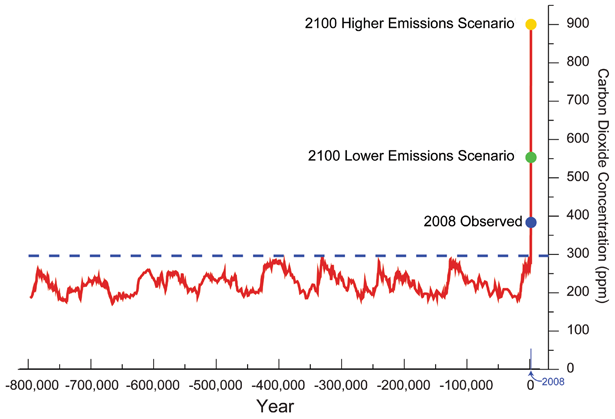
Figure 6. The global atmospheric concentration
of CO2 in parts per million (ppm) measured over the
past 800,000 years from ice cores and instrumental records and estimated
for 2100 using simulations. The dashed blue line shows "pre-industrial" concentrations of around 290 ppm. Source: Luthi et al. (2008) Nature; Tans (2008); IIASA 2008.
Scientists are still uncertain exactly how the Earth-climate system will respond to such changes
in carbon dioxide and other changes to the composition of the atmosphere. For example, how clouds respond to a warming is highly uncertain and it is not yet known whether they will amplify (positive feedback) or inhibit (negative feedback) the warming, or have little effect.
|